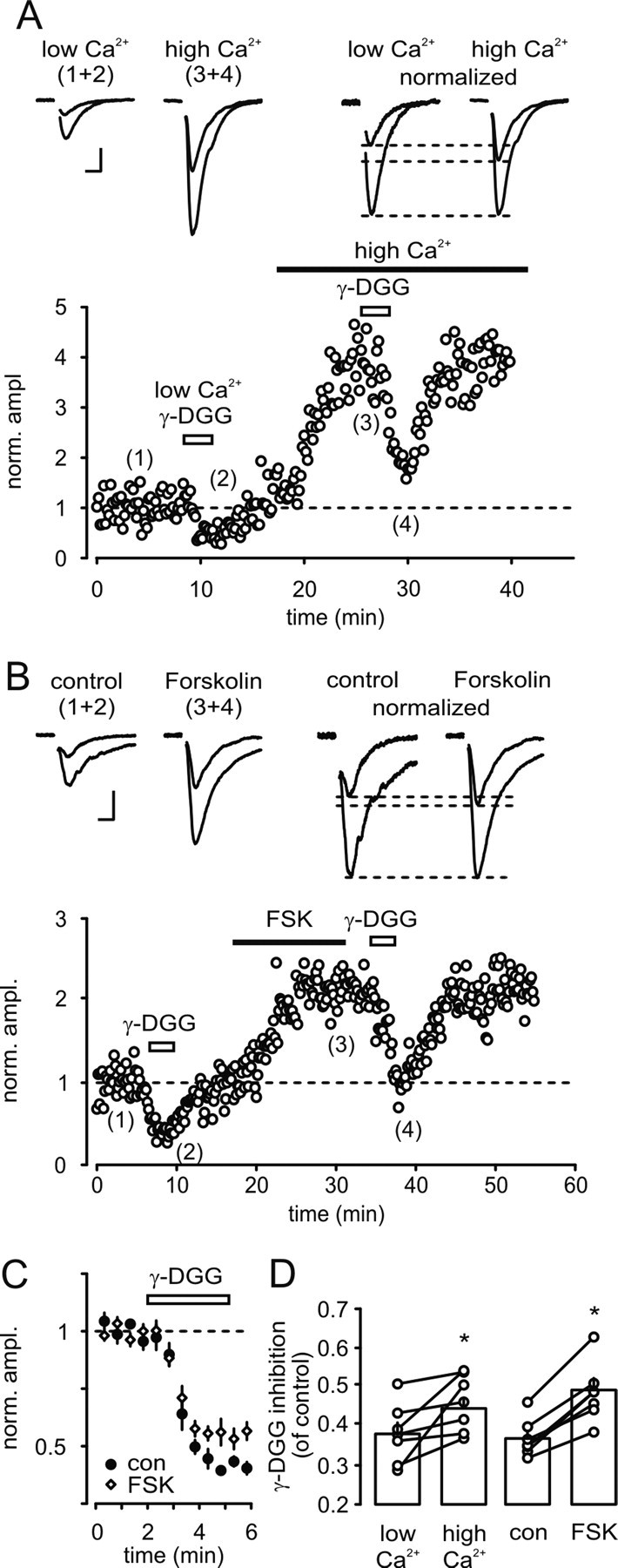Figure 3.

Forskolin-induced LTP at CA1-subicular bursting cell synapses involves an increase in glutamate release. A, Increasing transmitter release probability by elevating extracellular Ca2+ from 2 mm (low Ca2+) to 4 mm (high Ca2+) reduced the extent of γ-DGG-induced inhibition. Time course of EPSC amplitude in the presence of low (1) and high Ca2+ (3) and after application of γ-DGG (2, 4). Top, EPSCs recorded at the indicated time points and the corresponding normalized EPSCs. Note the reduced susceptibility of the EPSC to γ-DGG blockade when recorded in high Ca2+ (0.38 ± 0.03 vs 0.45 ± 0.03 of baseline, n = 7; p < 0.05). B, Reduced degree of EPSC blockade by γ-DGG after forskolin-induced LTP. Time course of EPSC amplitude and its suppression by γ-DGG under control conditions (2) and after forskolin-induced potentiation (4). Top, EPSCs recorded at the indicated time points and the corresponding normalized EPSCs. Note the reduced extent of γ-DGG-induced inhibition after expression of LTP (0.37 ± 0.02 vs 0.49 ± 0.03 of baseline, n = 7; p < 0.001). C, Normalized time course of γ-DGG-induced inhibition before (con) and after forskolin-induced potentiation (FSK). Note the reduced effect of γ-DGG following application of forskolin (FSK). D, Averaged γ-DGG-induced inhibition of EPSC amplitude in low and high Ca2+ and before (con) and after expression of LTP by forskolin (FSK). Calibration: 100 pA, 10 ms.
